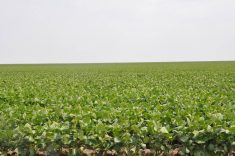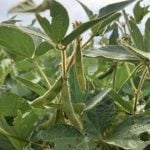Being in the hog industry stinks these days.
Experts at the 2003 Saskatchewan Pork Industry Symposium said producers and packers have been flattened by a variety of unforeseen circumstances.
“We usually have a situation where one is winning and one is losing, but when it’s something like the Canadian dollar strengthening, it’s impacting everybody,” said Jacquie Gibney, Saskatchewan Agriculture’s director of livestock development.
Canada is the world’s largest exporter of pork, so the exchange rate issue is front and centre when it comes to assessing blame for the sorry state of the industry. Japanese duties, the bovine spongiform encephalopathy crisis and continued overproduction have only made it worse.
Read Also

Extreme rain increases as planet warms
In this issue, we are going to wrap up our look at extreme rainfall by examining the different weather patterns that tend to be associated with these rainfall events.
The heat is on producers and packers, causing companies to sizzle and pop like bacon in a frying pan. Signs of stress are cropping up across the country.
In Ontario, the West Perth processing facility has permanently closed. In Manitoba, the Springhill Farms slaughter plant temporarily shut down this summer but has since reopened. In Saskatchewan, the Birsay Livestock Ltd. Partnership hog barn recently slipped into receivership.
Even the biggest businesses are under strain. Maple Leaf Foods Inc. reported an operating loss of $12 million in its meat products group for the first nine months of 2003, compared to operating earnings of $39 million for the same period last year.
Gibney said consumer support for the beef industry in the wake of the discovery of a BSE-infected cow in Alberta has been overwhelming, but it has come at the expense of other meats like pork.
The hurt is being felt all over, said Don Hrapchak, general manager of SPI Marketing Group Inc., one of Saskatchewan’s largest hog marketers.
At current prices, producers are losing $25 on every pig they take to market. That isn’t expected to change until April 2004, when he expects prices to return to the break-even point as the North American hog supply dwindles.
But that positive development could be negated if the Canadian dollar continues to ascend, leading to the closure of more hog barns and processing plants.
“If prices stay well below the cost of production for the next nine months or a year, we will have more operations that will have to leave the business,” Hrapchuk said.
“You can only lose money for so long before you have to shut down.”
The United States’ country-of-origin labelling, or COOL, legislation also poses a potential threat. Canada produces 27-28 million hogs a year, but has the ability to slaughter only about 20 million animals.
As a result, growers are highly dependent on U.S. processors. If COOL restricts the flow of Canadian hogs south as some anticipate, it will create another hardship, said Hrapchak.
But the outlook wasn’t all doom and gloom at the symposium. Michael Rowe, senior vice-president of Maple Leaf Pork, said a turnaround in fortunes is within sight, despite his best guess that the Canadian dollar will remain around 75 cents US for the next two to three years.
“We are going through our planning and our budgeting for 2004 right now and we certainly expect 2004 to be better,” he said.
One reason for his optimism is that Japan is poised to remove duties by the end of March 2004 that prevented lower-end products like ham from entering Canada’s second biggest market for pork.
Another is that world consumption of hog meat is expected to grow to 85.6 million tonnes in 2006 from 80.2 million tonnes in 2001, driven in large part by China and Japan, a country that is experiencing “declining self-sufficiency” in pork production.
Rowe also had an encouraging message for hog growers on the supply side. He said the European Union’s 34 percent share of world pork exports will decline as growers in that bloc face more environmental regulations and fewer subsidies.
There are also things that can be done at home to improve the plight of the industry, including paying “a fair price” for hog procurement and paying closer attention to the bottom line.
“We need to button down when it comes to costs,” said Rowe.















